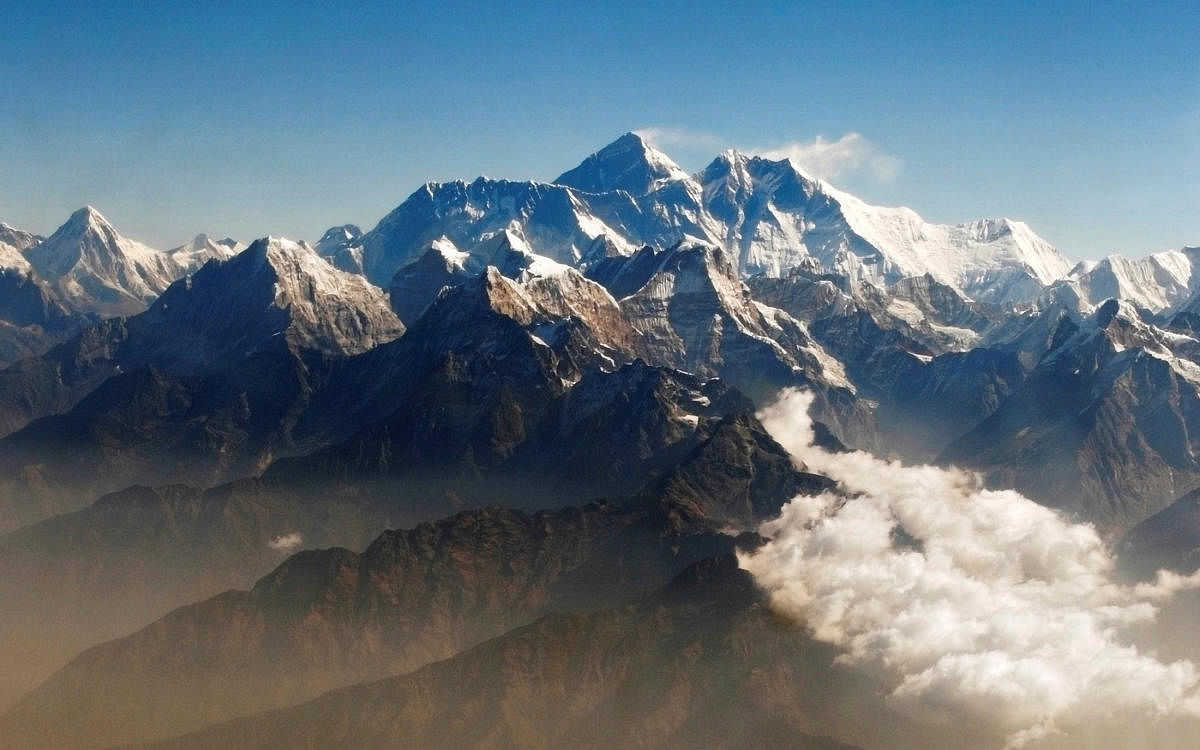Recently, the government of India opened up 137 peaks in four states to foreigners for mountaineering and trekking. Of these, 51 are in Uttarakhand, 24 in Sikkim, 15 in Jammu and Kashmir, and 47 in Himachal Pradesh.
Until now foreigners had to seek permission from the ministries of defence and home to climb these peaks. They can now directly apply to the Indian Mountaineering Foundation for permits. Minister of State for Tourism Prahlad Singh Patel says it is a historic step which will boost tourism.
The Himalayas effectively provide a great amount of ecological security and ecosystem services to the world. The Centre’s new decision is likely to adversely impact the mountains and the people that depend on it.
Now the states and the Centre will build walkways and roads, and clear areas for campsites. The green cover will be lost, the soil will erode, streams will change course, environs will become polluted and wildlife will be disturbed. Invasive species might creep in and make things worse for the indigenous flora and fauna.
Like the Himalayas, the Western Ghats in the south too perform important hydrological and watershed functions. Approximately 245 million people live in the peninsular Indian states that receive most of their water supply from rivers originating in the Western Ghats. The soil and water of this region sustain the livelihoods of millions of people. But the reports by Madhav Gadgil and Kasturirangan on protecting this mountain range have fallen on deaf ears. The governments taken over by vested interests are unable to implement crucial environmental laws.
The Himalayan range as a whole is sacred because it is in the north, which for Hindus is the direction of wisdom and spiritual rebirth. From times immemorial, these mountains have always invited sages, yogis, artists and philosophers. The Himalayas have come to embody the highest ideals and aspirations. The sight of their sublime peaks, soaring high and clean above the dusty, congested plains of India, has for centuries inspired visions of transcendent splendour and spiritual liberation. Those who respect Hindu ideologies are duty-bound to protect these hills.
In June 2014, the environment ministry in India used bureaucratic shortcoming to ease environment clearances. Driven by a cash economy, polluting industries were granted permission to operate within the vicinity of national parks and sanctuaries. Norms for coal tar processing, sand mining, paper pulp industries, etc. were eased, and several amendments were done to the Land Acquisition Act of 1894. Our air, water, vegetation, culture —all are being sold to the highest bidders.
Tourism in the Indian subcontinent generated more than $230 billion in 2017, up from almost $209 billion in 2016. The vast country offers myriad options: 36 world heritage sites, 103 national parks, Rajasthan’s hill forts, the holy city of Varanasi, and everything else in between the mountains of the Himalayas and the beaches of Goa.
Add in its jungles with tigers, elephants, and the last of Asia’s lions, and no other country is better suited to take advantage of nature for tourism revenue. Except for a few man-made structures like Taj Mahal, most of the tourism in India is at the cost of our mountains, forests, wildlife and water.
More people are visiting India than ever before — two decades ago about 2.4 million international tourists came to India a year; in 2017 the number was five times higher.
This is an alarming trend. Reasons to worry are most pronounced in the high-altitude Himalaya desert of Ladakh in Jammu & Kashmir, a region on the extreme northern side of the country where dramatic peaks and native snow leopards have created a tourism explosion, with almost 2.5 million people visiting annually.
In the meantime, wildlife is getting harder to spot. Glacial melt is speeding up the desertification of the Western Himalayas and increasing erosion. Trekkers hiking the mountains don’t give the alpine valleys a chance to recover.
Misleading with gimmicks
Throughout the Himalayas, the glaciers walling off the world’s tallest mountains from human encroachment are melting, opening more land for development. So far, much of the market has been from Indians, which presents enormous potential for international travel.
The country’s natural beauty is part of its marketing campaign, and wildlife is a huge draw. But while locals and tribals are denied access to forests, strangers coming with big money can get access to the very foundations of our life support systems.
After granting legal protection, the environment is now downgraded in the interest of short-term profit maximization, with full legal sanctity. Driven by commercial success and apathy to regulatory mechanisms, the growth of tourism industry continues unabated in our country.
Unfortunately, at a time when the nation is going through frequent tumults of floods, droughts, famines and diseases, leaders are misleading people through gimmicks. Upholding the country’s role in combating climate change, the Centre recently approved a strategy for creating an additional carbon sink equivalent to 2.5 to 3 billion tonnes of carbon dioxide through additional forest and tree cover by 2030.
But can the ecological services provided by a natural forest be replaced by such monoculture vegetations? Ban of single-use plastic, the release of butterflies on the prime minister’s birthday to a park or inviting citizens to conserve and protect the environment on virtual platforms cannot recompense the damage caused by the destruction of our virgin lands. Healthy ecosystems are the backbone of economic and social well-being.
(The writer is a professor of Zoology at Christ University and founder of Forest Watch, a watchdog for the wilderness of Western Ghats)
